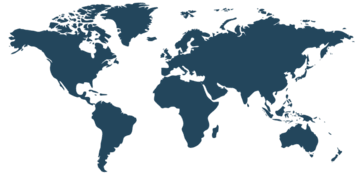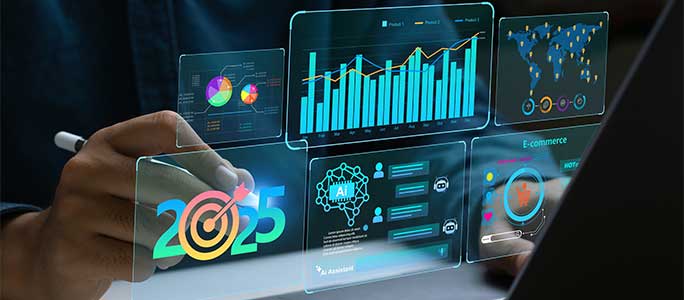
Procurement is an integral part of the manufacturing process. It is the process of acquiring goods and services that are required for manufacturing finished goods.
Hence, to ensure smooth working at the manufacturing shop floor, it is undoubtedly necessary to maintain the flow of materials into the manufacturing facility, just when they are required.
Read the fact:

Now, you must be wondering; procurement looks like it’s just the matter of purchase and pay! Then, why efficient procurement management is so crucial and complex at the same time?
To simply put, in a manufacturing organization, if the raw materials of the right quality, and in the right quantity are not made available at the right time, then it will obstruct the business operations—and ultimately delay customers’ deadlines.
That’s precisely why procurement acts as an indelible part of manufacturing.
Now, what makes this process of procurement complex is the need of controlling expenses and increasing operational efficiency when acquiring the goods and services.
And this is where, most of the manufacturers fall short—experiencing heavy loss in terms of resources, money, and time.
If you are looking for a solution to it, this blog will help you clear up the misconceptions and queries you might have related to procurement management and will aid you setting up a successful procurement management program. Keep reading!
Knowing What Procurement Management Is?
Procurement management is the functionality that optimizes the end-to-end process of procuring materials required for production.
It is the approach to strategize this process of obtaining goods and services, as efficiently as an organization could do.
Strategizing involves, getting the production supplies, from the preferred vendors, within a stipulated budget, and timeline.
It begins with maintenance and continuous evaluation of suppliers who can provide competitively priced, yet high-quality goods and services that a company needs.
That means, the propelling intent of this functionality is to avoid failures and unprecedented delays in supply chain processes and ensure uninterrupted production always, consequently making organizations more agile and productive.
Importance of efficient procurement management-
More than a business necessity, procurement management is an effective way to leverage a competitive advantage by saving money, time, and resources.
Because, whenever it comes to outsourcing required goods and services, organizations must ensure maximum efficiency and cost-effectiveness—to secure profits.
Organizations that succeed in managing their procurement activities efficiently are more productive, run more smoothly, and never exceed the set budget.
Such organizations experience many positive advantages across their business operations. Out of the numerous ones, the three prominent advantages include:
– It helps drive down costs: It eliminates the increased costs due to unplanned or peak season purchases, and during purchase, contributes to negotiating the supplier contracts.
– Improves Service Quality: It performs identification & evaluation of suppliers based on their “quality” & “performance”. This helps manufacturers ensure quality in every purchase.
– Mitigates the Risks Involved- Effective procurement management controls all the potential contingencies such as uncontrolled price escalations, logistical issues, resource unavailability, quality & compliance issues, etc.
Procedural Flow of Procurement Management Process-
The ideology of procurement management isn’t confined only up to managing and optimizing the spending capacity of an organization.
In fact, it is a highly meticulous plan that involves myriad of processes that need to be carried out responsibly. These include:

Why it is necessary to adopt a Procurement Management Software-
As discussed above, the procurement management process contains numerous steps that need to be followed in a defined manner.
Errors in even a small step could create a bunch of pores through which organization’s money, time, and resources will leak.
And there is huge possibility of such incidents happening while performing the procurement management process manually— documenting everything on paper or spreadsheets and communicating over calls and emails.
To eliminate such risks, relying on a robust Procurement Management Software is the key. It not only relieves the major portion of your manpower enabling them to dedicate their time on other important profit-promising tasks
And for this reason, companies are shifting their focus on the cloud-based procurement software. It provides the ability to access and respond via internet irrespective of the user’s location.
This means, the user can have real-time updates of the ongoing processes and can efficiently manage every single operation right from requisition to sourcing, and payments—modernizing the complete procurement process.
A simple graphical representation of the complete procurement management process-

Let us have a closer look at how Procurement Management Software impacts the purchasing process.
1. Vendor Management- Before the starting the procurement process, a certified vendor database is essential. Enters ERP solution’s vendor management functionality.
ERP automates and eases the complex task of vendor management by leaps and bounds. A robust ERP system facilitates in creating a strong supplier database— making it easier for the manufacturers to order from multiple suppliers.
From names and addresses to the materials ordered, suppliers’ certifications, etc.- this database contains all the supplier-related information that is required along with records of old and new contracts for reference and comparison.
When a Vendor’s Certification nears expiry, ERP system alerts with a message, alerting the user to check certification or look for an alternative vendor.
In addition, an ERP also handles tasks like comparing supplier prices, selecting the appropriate ones, getting quotations, negotiating contracts, managing taxes & discounts, managing supplier certification and notifying before expiry etc.
This encourages transparent dealings and thus strong relationships.
Also, the sophisticated reporting capabilities of ERP projects a clear picture of the business insights and creates detailed reports regarding vendor performance based on price, quality and lead times, top buying products, etc. to improve the decision-making ability exceptionally.
2. Purchase Planning- Effective purchase planning prevents organizations from experiencing events like material shortage and overstocking.
Having a procurement management system like an ERP software in place keeps all such worries at bay by continuously managing inventory in the background to help you know about the stock you have on hand and stock that needs to be ordered.
3. Purchase Requisition- Right after panning, the ERP allows creating a purchase request document mentioning the required items.
From enabling to fill the requisition form digitally, to routing it among the purchasing department for internal approvals, the software handles everything on its own— eliminating the need of paperwork and manual inputs.
Moreover, to prevent stockouts, ERP offers the capability of setting up a “re-order level” so that, when the stock falls beyond the set levels, material request is created automatically. Usually, the message looks like this-
4. Purchase Order (PO)- Once the purchase request is approved, purchase order can be created from it directly with just a click within the ERP, without the need of entering the same data again.
This:
- Increases efficiency
- Saves paper costs
- Reduces human error
- Increases visibility
5. Purchase Order Receipt- Once the Purchase Order is issued and as the vendor completes delivery of the purchased items, the ERP software allows to perform invoice reconciliation to precisely match with the cited purchase order.
Right from retrieving the original purchase order automatically, to comparing it with the received invoice—linking the line-items precisely, to identifying the mismatched and matched portions, it lets you create a purchase receipt that acts as an approval to initiate the payment process.
This receipt is also referred as Goods Receipt Purchase Order (GRPO).
6. QC on Purchase Order Receipt- Now, it is necessary to ensure the quality of the received goods before transferring them to inventory.
In that case, the ERP allows to implement Quality Checks directly onto the received goods. It also provides the capability of either returning or scrapping the products that could not pass the QC.
Further, to incorporate greater visibility into the operations, products that have successfully passed the check are tagged with unique IDs, auto-generated by ERP.
These products can be grouped into individual lots having unique lot number that facilitates easy identification along the supply chain or whenever any quality issue pops up.
7. Voucher Creation & Invoice Approval- Prior to payment, ERP allows to create voucher against the invoices to ensure accuracy of the prices mentioned.
Apart from preventing organizations from paying for inaccurate invoices, the voucher modification functionality of ERP allows to adjust the supplementary charges such as freight charges, landed cost, etc. as required.
8. Recordkeeping- Since a manufacturing company purchases the required goods and services from multiple vendors, there are serious possibilities that a chaotic scenario could arrive during the process.
To avoid this, it is necessary to maintain records of the entire process from purchase request, price negotiations, to voucher creation and payment.
An ERP offers the privilege of saving and managing all the business-related documents digitally at a central repository.
This ensures effortless retrieval of necessary documents required for various purposes such as: auditing and tax calculations, reference for future purchases, to resolve potential disputes, etc.
How BatchMaster Can be the Hand of Help?
The robust cloud-based procurement solution and even on-premises version of BatchMaster ERP enables companies to manage the entire procurement process centrally.
It intelligently automates the complete process, right from evaluating and approving suppliers to negotiating and managing bids along with tracking every order to ensure on-time receipt of goods.
It maintains every single information of the pre-approved suppliers to avail the advantage of the already negotiated contracts.
Moreover, its interactive dashboards and detailed reports provide real-time views of spending and supplier performance anytime, anywhere.
If you wish to make the transition from your legacy procurement system to an automated one, get in touch with our team of experts at BatchMaster ERP.



















